SUMMARY
This is AI generated summarization, which may have errors. For context, always refer to the full article.
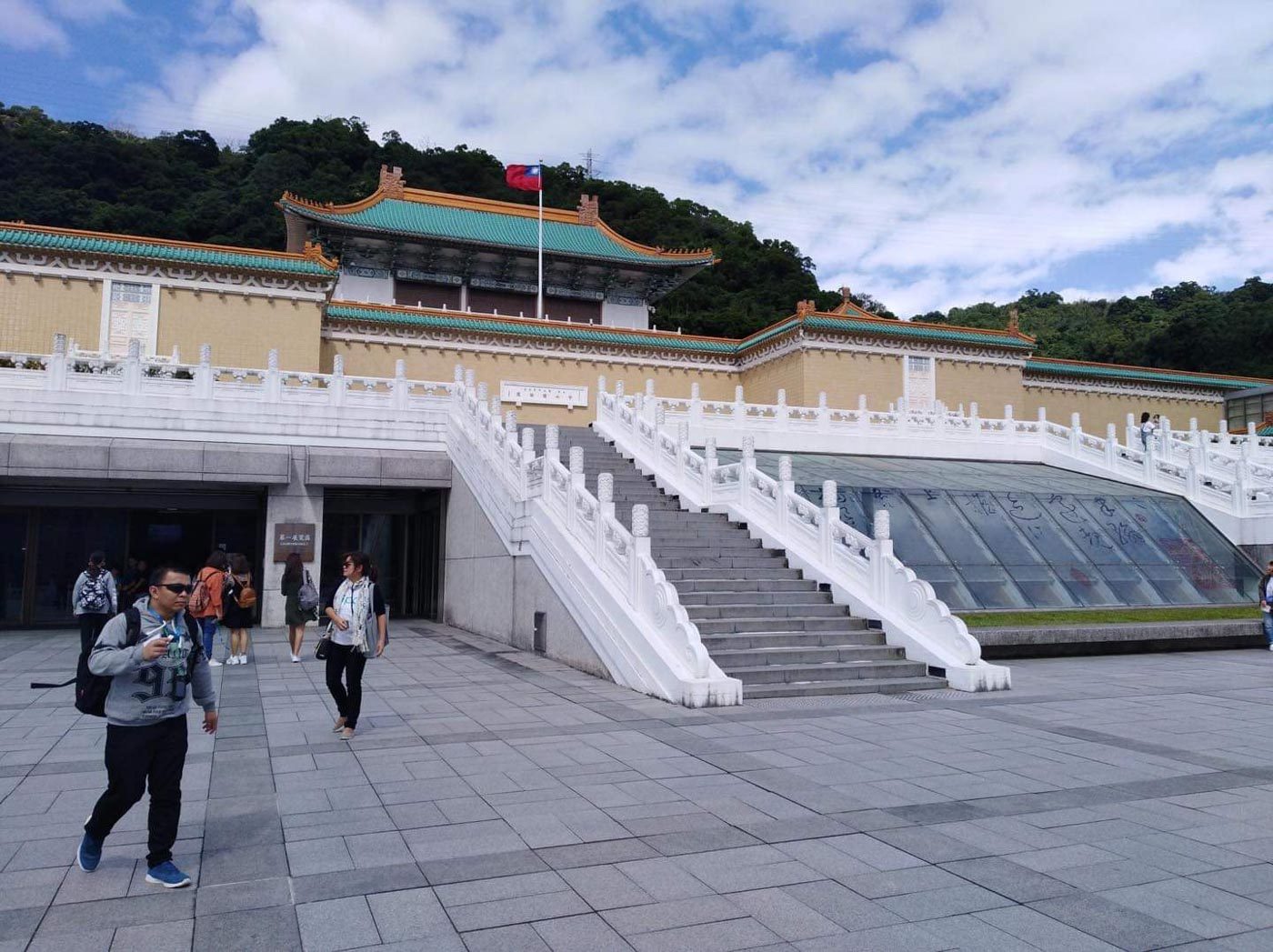
BAGUIO CITY, Philippines – Because of visa relaxation, Taiwan has become the Pinoys’ favorite country destination.
This 2019, about 500,000 Filipino tourists are expected to have landed in that republic above our heads. That means almost 8 full AirAsia trips every day.
Where in Taiwan do most Filipinos go? Before my wifi dissipated in the skies, I noted the places my Filipino Facebook friends went to. These were:
- Taipei 101. This tall building (101 storeys!) at Taipei’s Xinyi District was the tallest until the Burj Khalifa took the trophy. Almost half a kilometer tall, it also has the fastest elevators. You take 3 queues in Taipei 101. The first was the de rigeur pose in front of it, then the line to Shin Yeh and other fine restaurants there and then the line to the elevator where you get a 360-degree view of the city on top.
- Or you can take the MRT to Xiangshan or Elephant Mountain. Be prepared to walk a bit and view a lower panorama of the city.
- Shifen Waterfalls, which looks like an overflowing basin. And then later you can tour the old street to buy Taiwanese memorabilia.
- Taiwan Zoo to look at the pandas, and
- The night markets like the Shilin, Raohe, and Jiufen.
Only a few mentioned the Taiwan National Palace Museum, which is one of the most astounding museums I’ve been to.
We’ve asked our FB friends why they decided to skip the museum, and they said that they knew little about it and they felt so lost inside when they went on their own.
I suggest you get a pocket wi-fi rental service upon embarking on the plane. Try to get Jetfi wifi, which is not only cheap but can be used for days. The reception is great and you can share as many as 5 devices with it. It can translate 22 languages, which is convenient when haggling or dealing with the Taiwanese. You can just drop it off at their airport booth when you leave.
Taiwan National Palace Museum
For the museum, join a guided tour. There are almost 700 museum guides, although only about 70 cater to English-speaking tourists. Almost all cater to the Chinese in the mainland and in Hongkong; about 6 million of them visit the museum annually.
We were lucky to get Jerri So that Saturday morning. She was born in the Philippines and volunteers as a guide every Saturday. She is an accountant and also a manager of an online cupcake business.
Jerri told us that there is the Northern (where we were) and the Southern Palace Museum in Chiayi.
The museums have almost 700,000 ancient Chinese artifacts and artworks that used to be seen only by emperors and other Chinese royalty. When we say ancient, that means 8,000 years of Chinese art from the Neolithic to the series of dynasties we used to memorize in high school.
Jeri told us that the museum had its roots in 1925 after the expulsion of Puyi (Remember Bertolucci’s Last Emperor) from the Forbidden City in Beijing.
In 1931, Generalissimo Chiang Kai Shek called for the evacuation of the most valuable art pieces from the Kingdom to protect them from the Imperial Japanese Army.
About 20,000 crates were taken out of Beijing and brought to Shanghai. The collection was moved to avoid the Japanese, and when the Japanese surrendered, the Chinese Civil War resumed. Chiang Kai-shek decided to evacuate all the collection to Taiwan, but the communist army was able to seize control of the museum collection before they were all brought to Taiwan.
Only 22% of the crates made it to Taiwan, but these accounted for the very best of the collection. Most of them were the jade, metal and porcelain artifacts, Jerri said. Those left in the Forbidden City were those from the Ming and Qing dynasties.
It would be impossible to see all the collection in half a day, and so Jerri guided us to her favorites.
We were first taught about the Chinese alphabet and its evolution by looking at the metal cauldrons, bowls, and braziers in the collection. One of them is the Cauldron of Duke of Mao from the late Zhou Dynasty which had the longest Chinese bronze inscriptions.
Jerri pointed out the few ancient words we previously learned from the cauldron. She also made us peep into the large metal bells, which she said can play “Ode to Joy” if you and your friends are musically (and muscularly) adept.
Then she showed us the ceramic collection, including the rare Ru ware “Warming Bowl in the Shape of a Flower with Light Bluish-Green Glaze” and the “Narcissus Basin with Light Bluish-green Glaze.” There are only 80 of these Ru wares, so rare they have their own names.
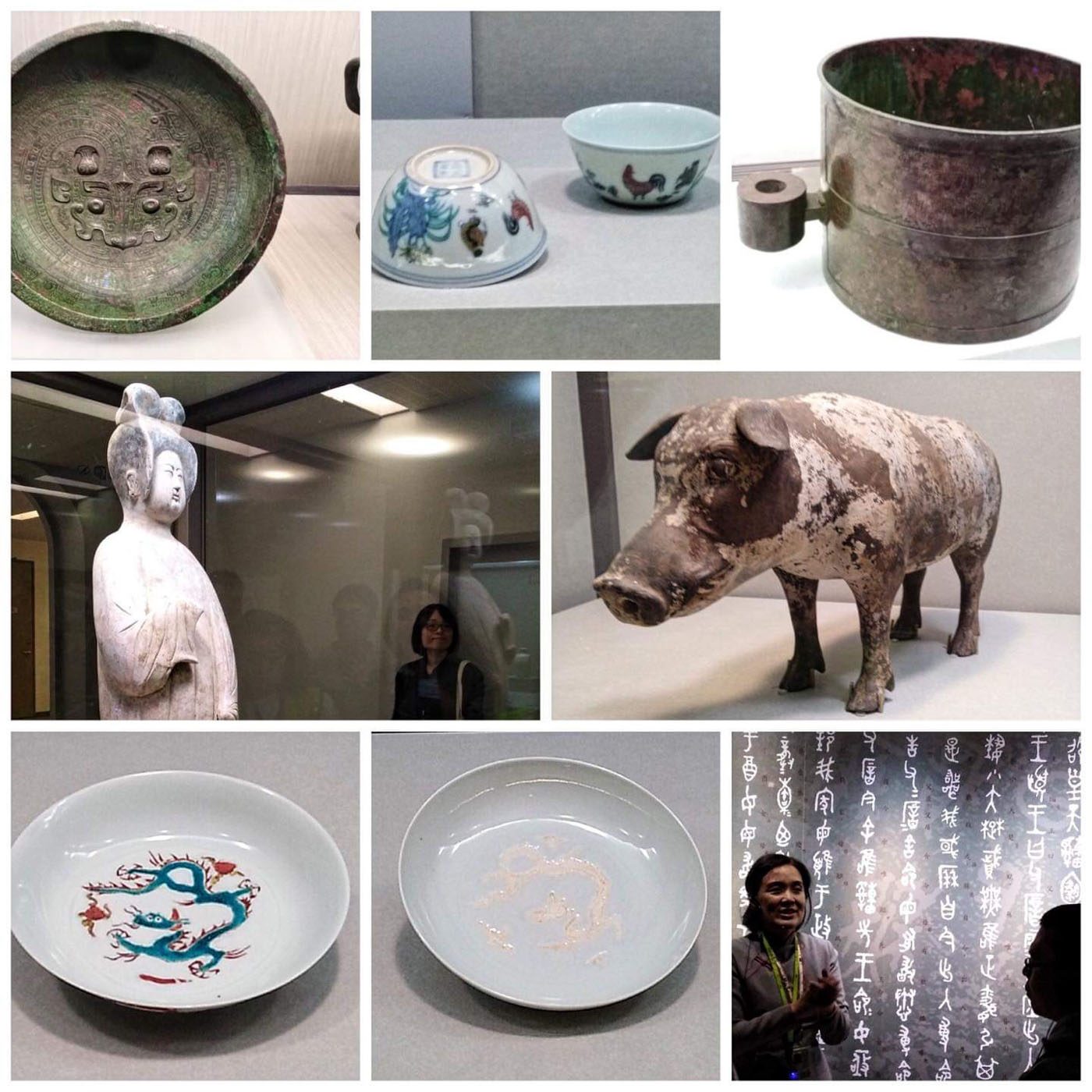
Don’t bother to ask how much they cost but one “lesser” porcelain, known as the chicken cup, made during the Ming dynasty in the doucai method, looked so unremarkable to an untrained eye that you would mistake it for a bowl you would use for your tinola. One of the chicken cups was sold at Sotheby’s for US$36 million, Jerri told us.
She told us about designs you could only use for emperors. If you want to use one, the designs would be literally incised out.
Then Jerri brought us to what she told me was her most favorite artifact in the museum. It is what she called, The Fat Lady. It is a court lady done in terra cotta with some traces of colored paint. She was wearing a loose gown with pointed shoes so she won’t trip.
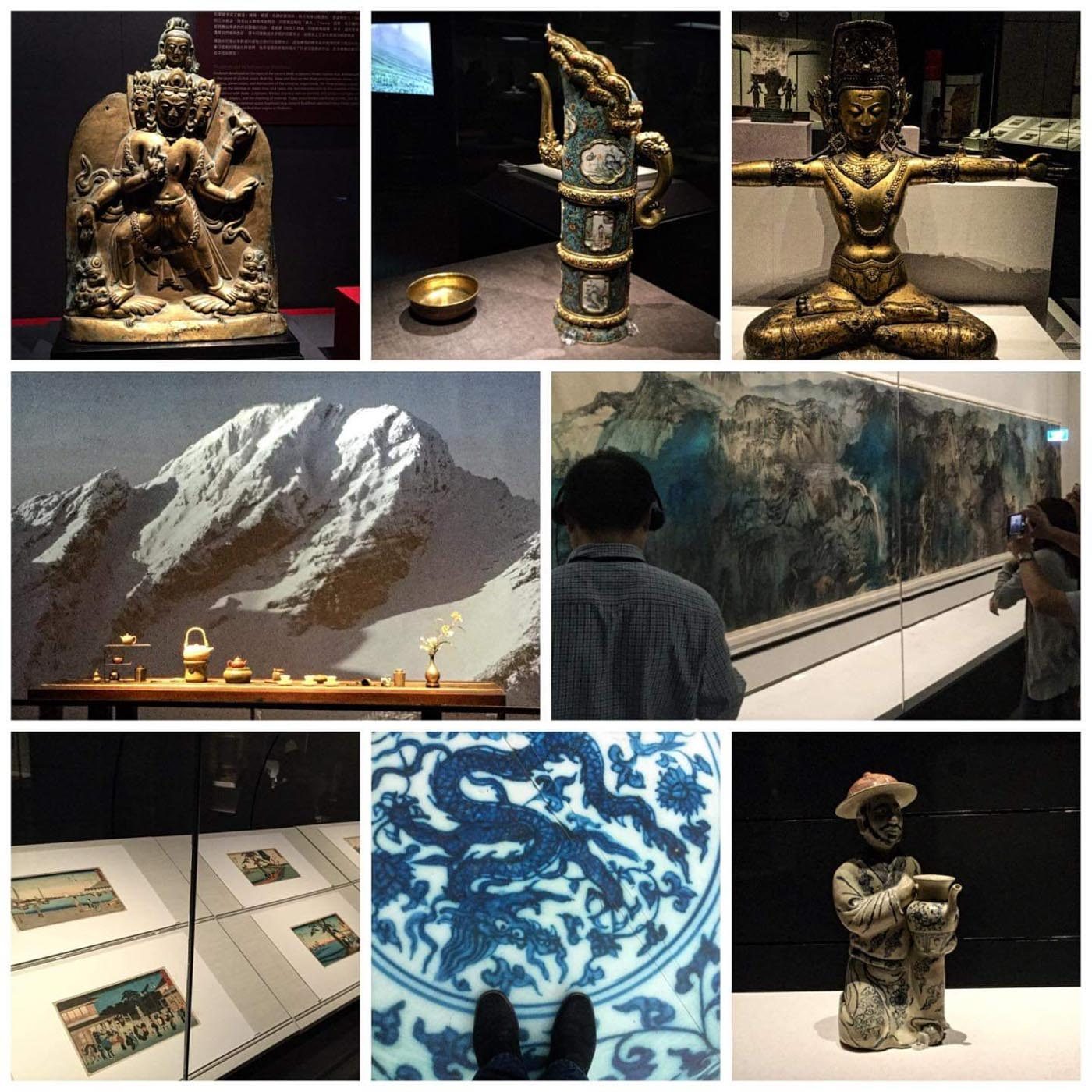
Jadeite cabbage
But what was obvious is the Tang woman’s voluptuousness, which was considered the epitome of beauty by the emperors of the Tang dynasty. The sculpture though was not part of the original collection and was endowed to the museum as a gift.
The “Mona Lisa” of the Northern collection, however, is the jadeite cabbage. It is a small Chinese cabbage with a locust and katydid blending among the leaves. At least, it is organic!
And not that old. It was a dowry gift of the wife of the Guangxu Emperor in 1889, in hopes that they would have many children. They didn’t have any, also because the locust wasn’t a fertility symbol anyway. But the way the color of the jadeite was used to mimic the cabbage was remarkable. Jeri said that there are other jade cabbages in the collection.
“But they looked like they’ve been on display for three days. This one looks fresh,” she said.
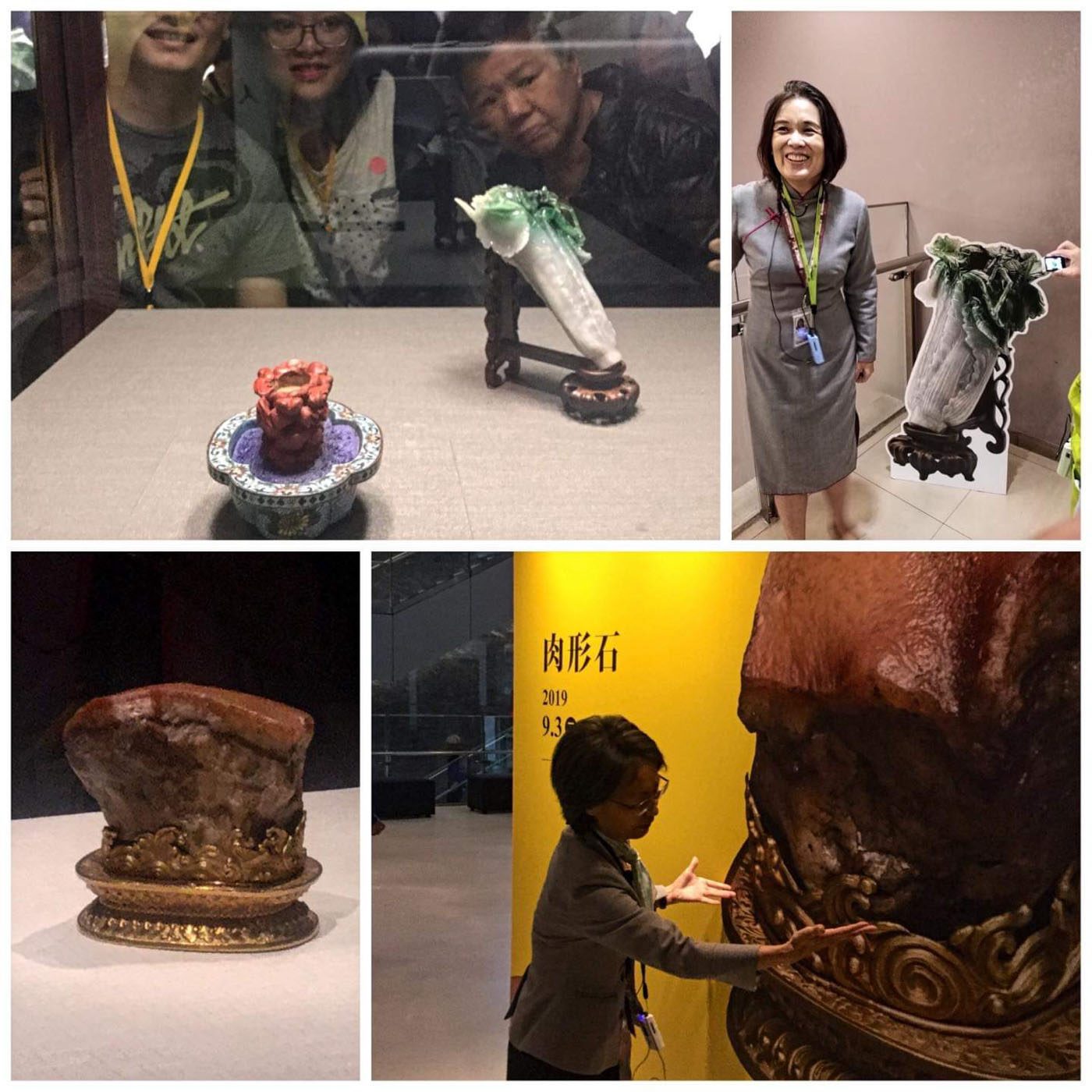
Yes, indeed. And the queue again was as long so people just looked at the cabbage and meditated on it for a few seconds.
We made a few rounds of the other 7 giant rooms in the museum, but the noontime crowd was getting a bit hungrier because of the cabbage. There were rare books, jewelry, and ancient scrolls we hope to return to when we can.
There were even mini-versions of the museum pieces, kept by emperors in curio boxes. And ivory balls carved from a single elephant tusk with successive spheres inside. The craftsmen carved them into as many as 21 concentric levels which can be moved freely (though they are under glass cases) to show the precise and nerve-wracking artistry.
Imperial feast
After the half-day tour, we had lunch at the Silk Palace and were treated to their National Palace Museum Imperial Treasures Feast, which features 8 dishes similar to what we just saw.
There was the jadeite cabbage made of a baby bok choy boiled in chicken broth and placed on top of ham (made to look like the stand) and sergestid shrimps to replace the insects on the original one.
Then there was the famous meat-shaped stone made of pig knuckles and stewed in soy, sugar, and scallions.
Also the “white jade branch of elegant lychee” made of ampalaya. The Epoch of warring States Ting Cauldron was recreated with a soup known as Buddha Jumps Over the Wall made of chicken broth, quail eggs, bamboo shoots, scallops, sea cucumber, abalone, chicken, Jinhua ham, pork tendon, mushrooms, taro, and sharks fin melon. Others in the collection was the Chicken Wing Stuffed with Glutinous Rice, the Yu’an Dynasty Yun Lin Goose, the Mao-Kung Ting Caudron which became instead halo-halo with fruits on ice and the curio box of exquisite desserts.
After this, we were on our way to emulating the Fat Lady of Tang.
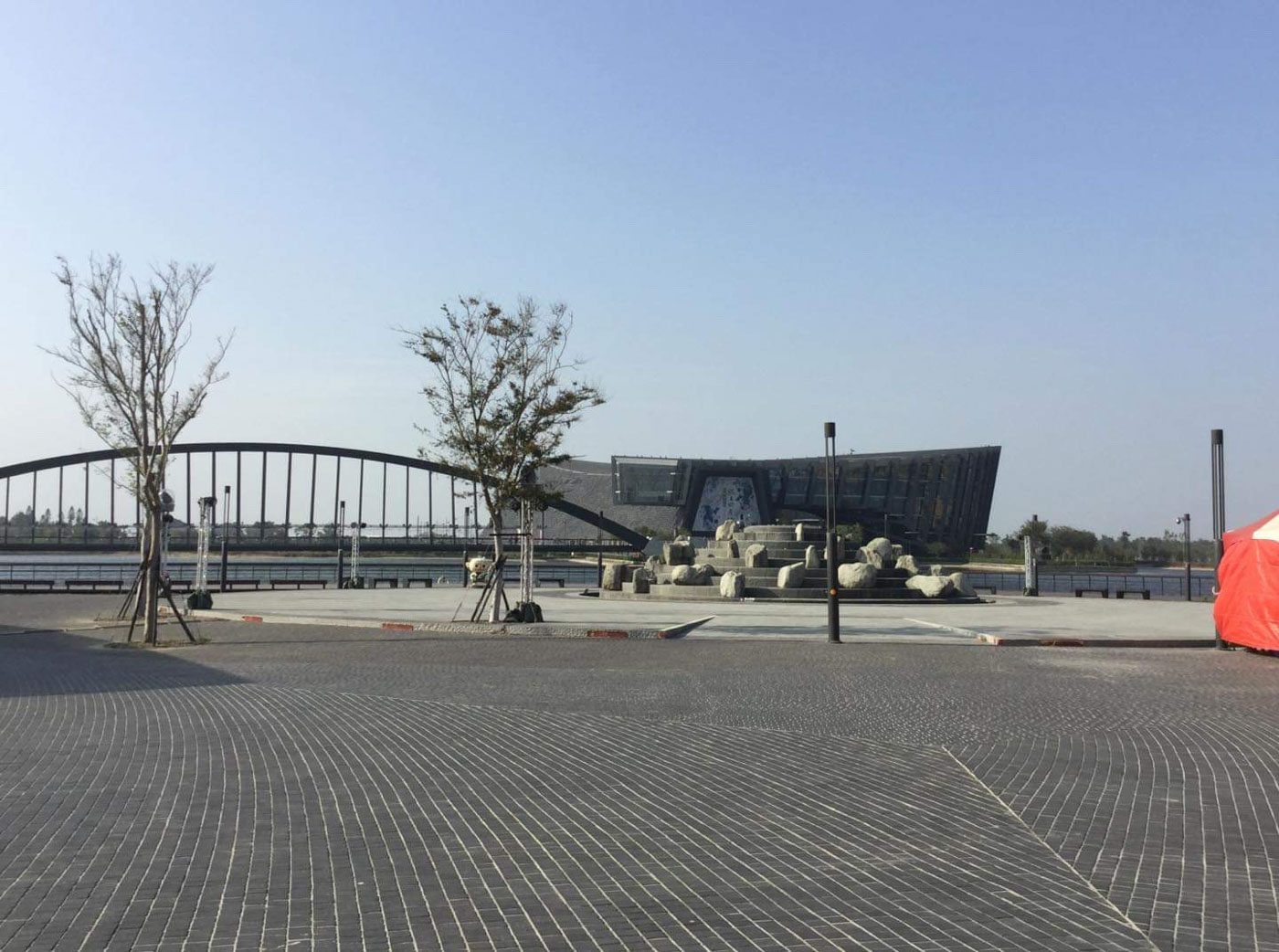
Taiwan National Museum in Chiayi
The Taiwan National Museum in Taipei City is one of the most important museums in the world, with the most extensive collections of Chinese art.
So the news in 2016 that Taiwan will close the museum for 3 years starting in 2020 startled not only the Taiwanese but their neighbors, including Filipinos who have only then started to flock the republic.
The closure is being reconsidered, but it is high time for Filipinos to indeed visit the Taipei museum as well as the new one in Chiayi City.
Our guide from Tripool said that the Chiayi branch, formally known as the Southern Branch of the National Palace Museum, opened in late 2017.
While the Taipei Museum was indeed a palace, the one in Chiayi was more postmodern, something designed like the Chinese brushstroke.
So with a group of Southeast bloggers and writers, we went south, even trying their bullet train, to get nearer the Philippines.
Leaving in the morning, we reached Chiayi at almost 4 pm, so we just had a couple hours to tour the Southern Branch.
“Composed of three distinct fluid forms, each represents inspiration from the three Chinese calligraphy strokes: the thick ink, the half-dry and the smearing, the Palace Museum Southern Branch will present itself as an ink-dark, sensuous sculptural form sitting within the surrounding green rice and sugar cane fields,” the information brochure of Kris Yao, the architect of the museum.
Of course, we can’t see it from above, but the long walk including the lovely bridge across the artificial lake was most welcome. Along the way, we passed outdoor sculptures, including a circle with boulders similar to our dap-ay in the Cordilleras.
The Southern Branch was more spacious than the one in Taipei and promises to show its neighboring culture. The featured country in 2019 is Thailand, and they were given a huge room in the museum not only showing the arts of crafts of Thailand but interactive pieces for the children and the children-at-heart.
There are also the Tea Room, Porcelain Room, and Textile Room, which are more or less permanent, showing the China treasures brought here in the 1920s as well as the other artworks and collections from the other cultures.
New acquisitions
In the Tea Room, for example, we have a complete Japanese tea room, Ming teahouse, Vietnamese teapots, and recovered relics from the tea route. Of course, there are valuable items like jade teapots, iron water kettles, and cloisonné tea servers.
The new acquisitions included Hokusai prints, Persian carpets, Tibetan statues, and Vietnamese porcelains. Their Buddhist collections are worth the pilgrimage.
In one room was also the massive “Panorama of Mount Lui,” a painting in one large bolt of silk created by the great Chang Dai-chien from 1981 to 1983, the year he died. One tourist told me she spent an afternoon just meditating on this piece, and I can’t blame her. She’s Japanese, by the way.
But then, because it’s nearing dinner, we came here to relish their most cherished possession. It is a piece of boiled pork belly brushed with soy, except it wasn’t. It is a jasper stone carved and dyed to look like one.
“Dyeing the stone, from top to bottom a gradation of the color brown, the craftsmen achieve the effect of the soy sauce slow stew,” the poster near it said. “What makes this piece of art extra special is that the craftsmen made countless small holes on the surface of the stone to render the pores, reminding one of the distinct mixtures of softness and chewiness of the skin of Dongpo Pork when it is just cooked.”
Like the famous jadeite cabbage in Taipei, people queued to see this pork chunk. How artistically Chinese.
After leaving the museum (which we vowed to see again), we were bid off by a 15-minute laser show of the façade.
At the Nice Hotel (more than nice) that night, I craved for pochero to marry the pork and cabbage, but was wowed instead by their fish head stew and the fresh oyster soup.
But back home, I vow to look at the Benguet wongbok and pork in my chopsuey with the critical eye I used in the twin museums in Taiwan. – Rappler.com
Flying to Taiwan this January? Use this Klook promo code to make the most out of your trip.
Add a comment
How does this make you feel?
There are no comments yet. Add your comment to start the conversation.